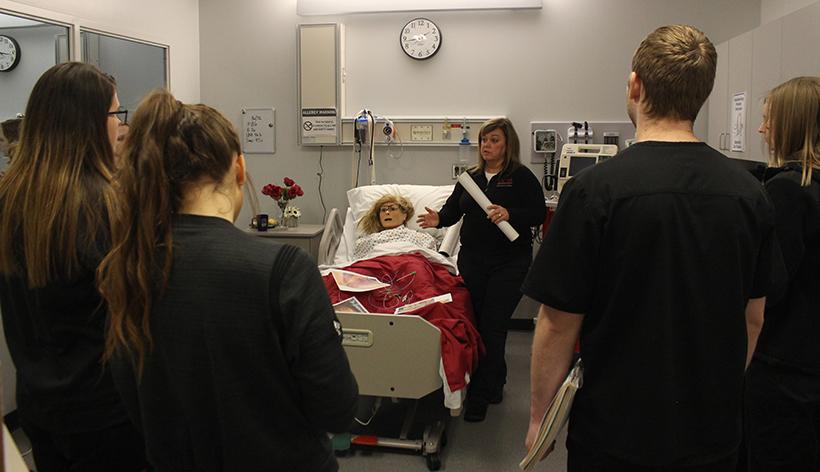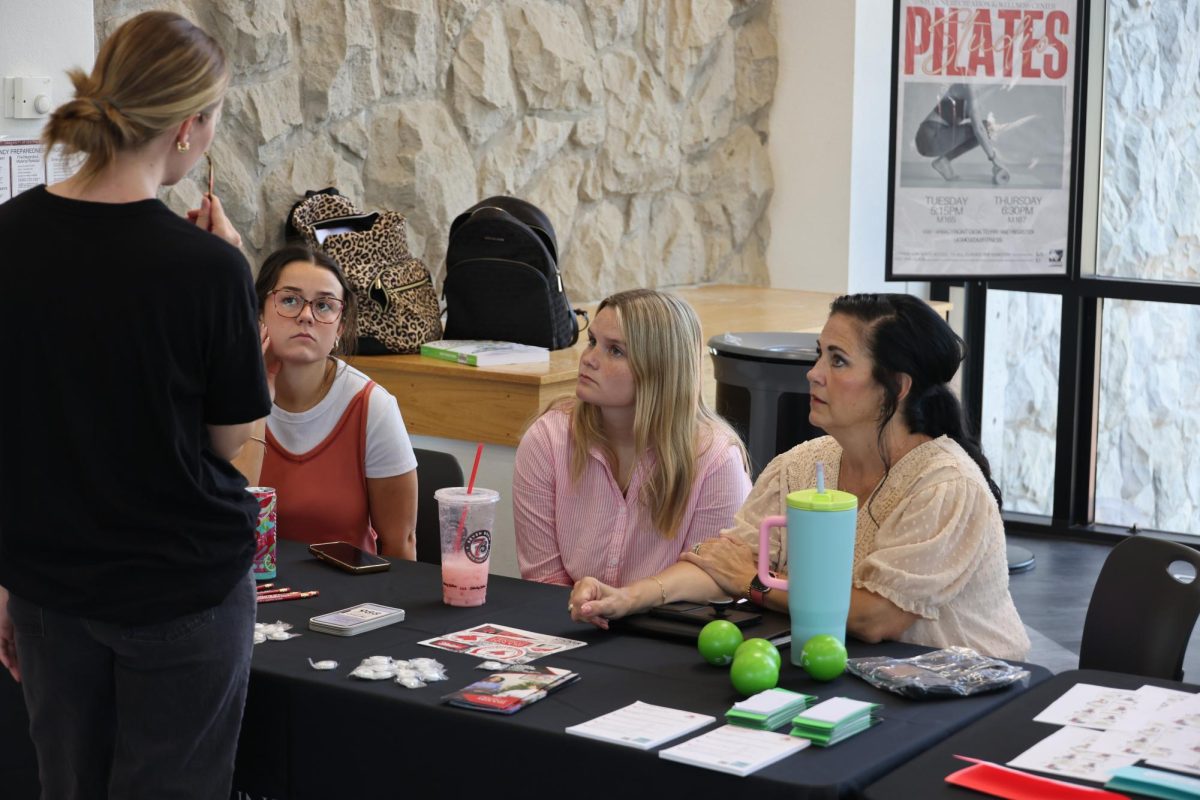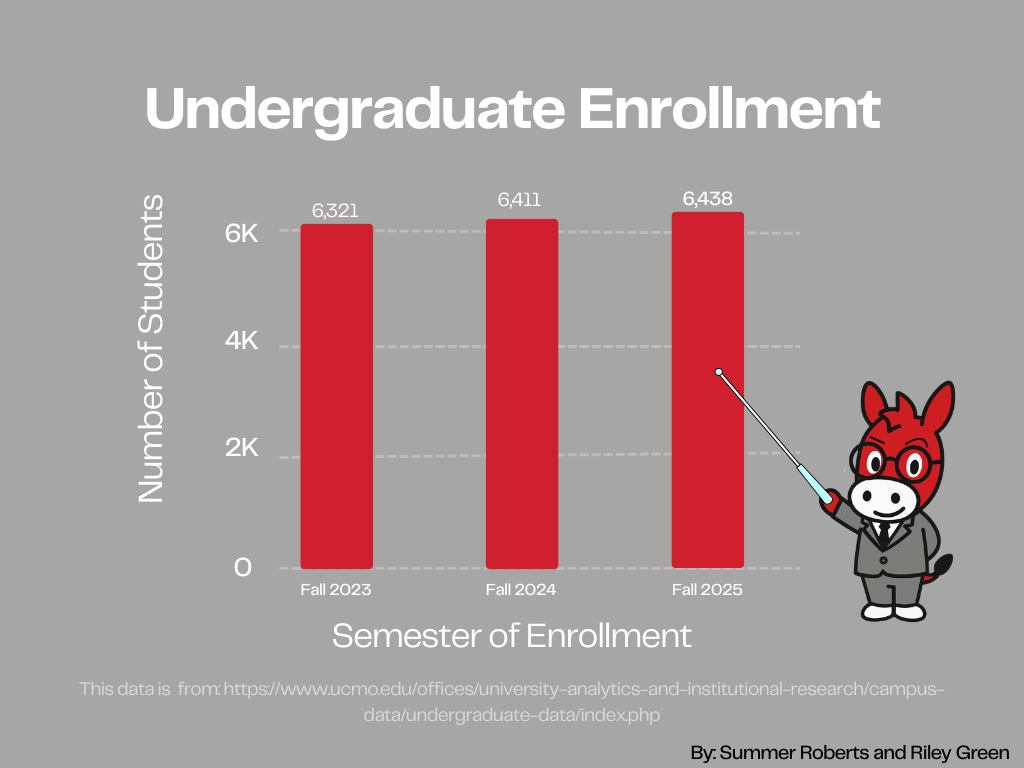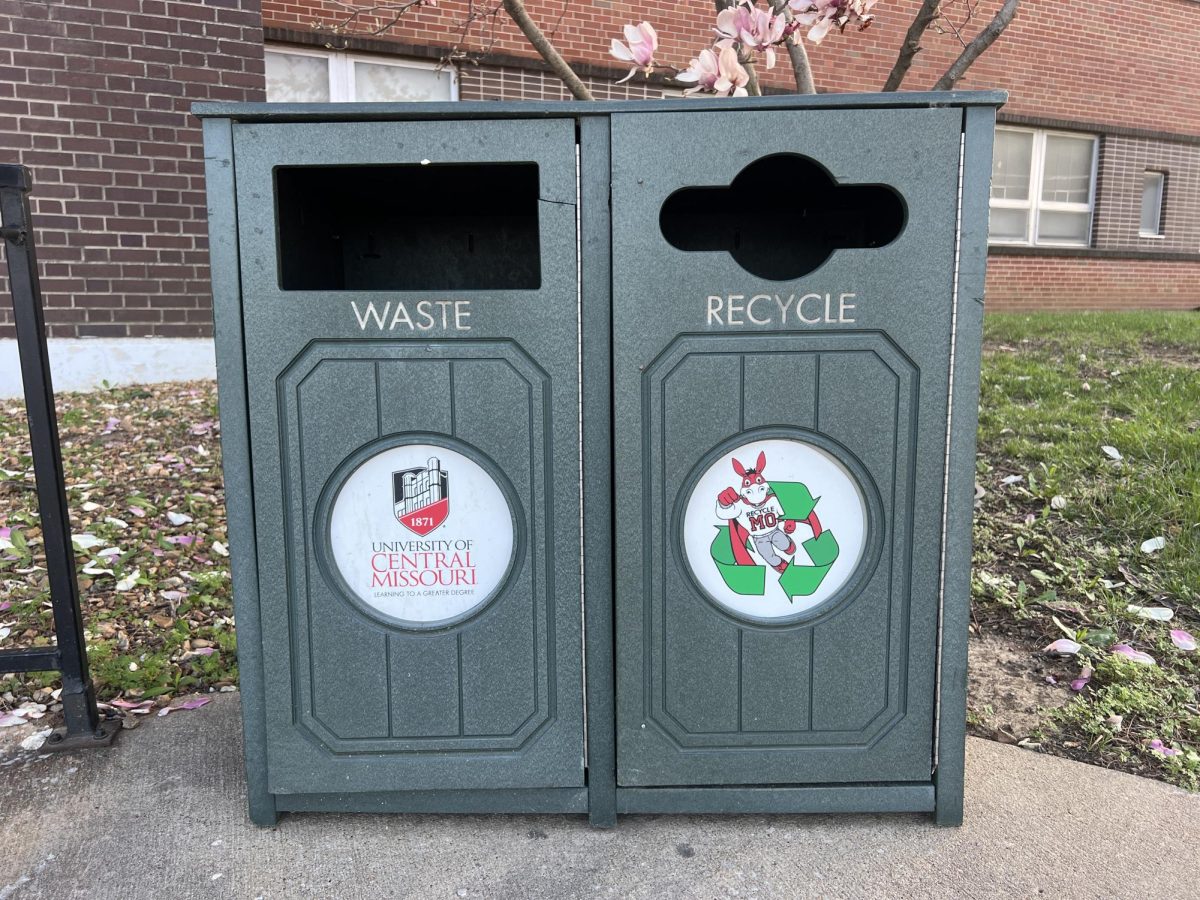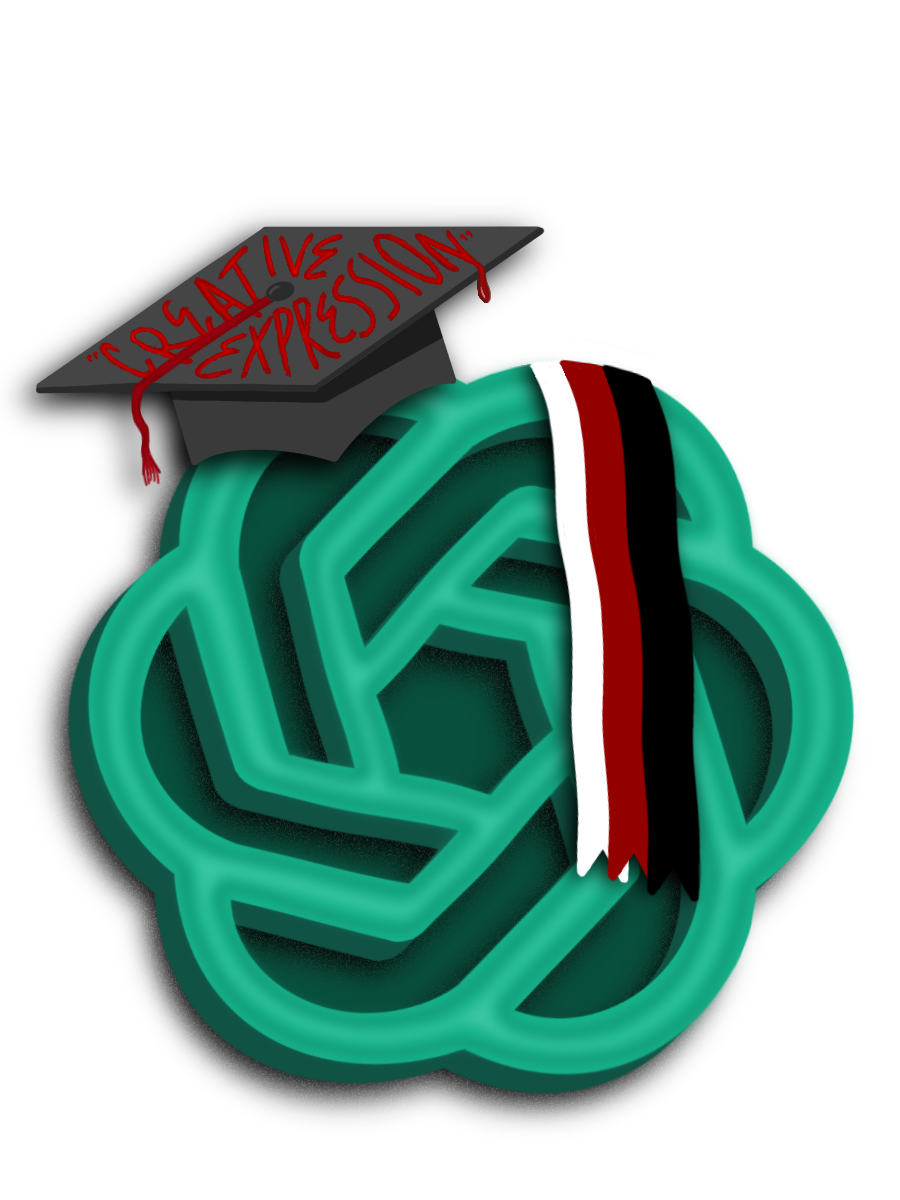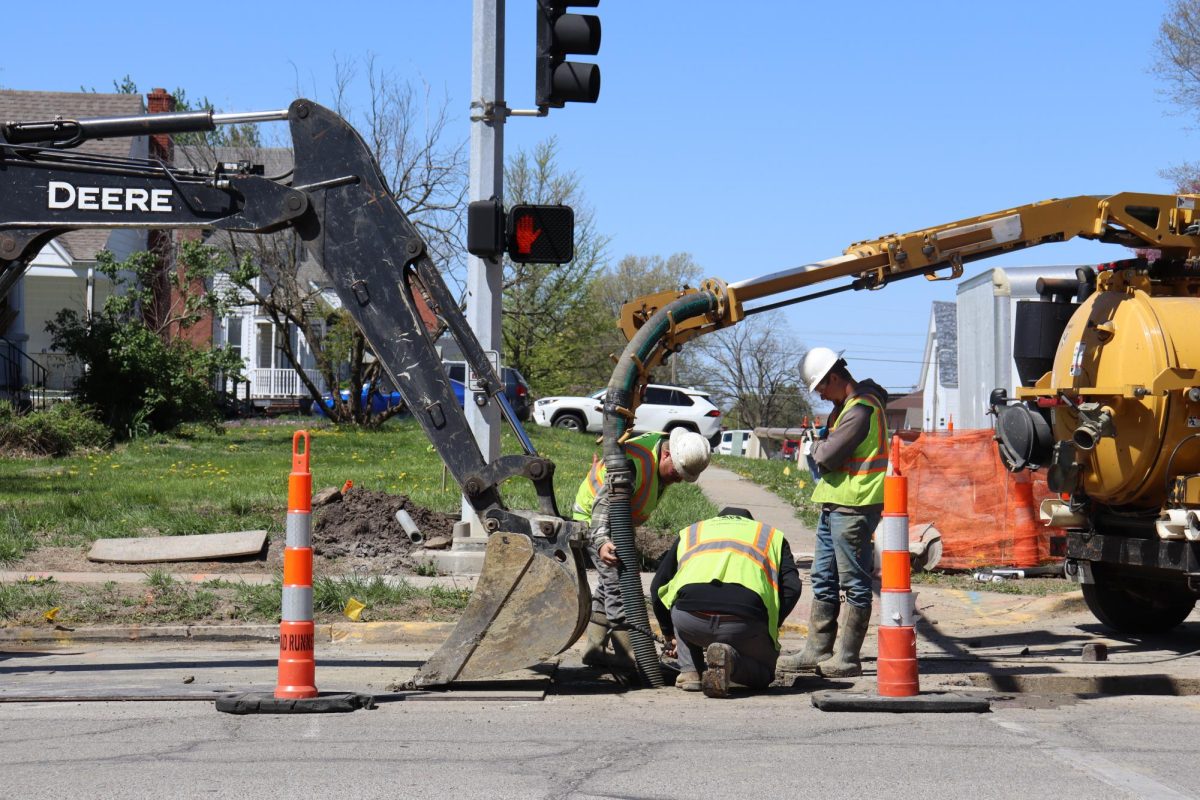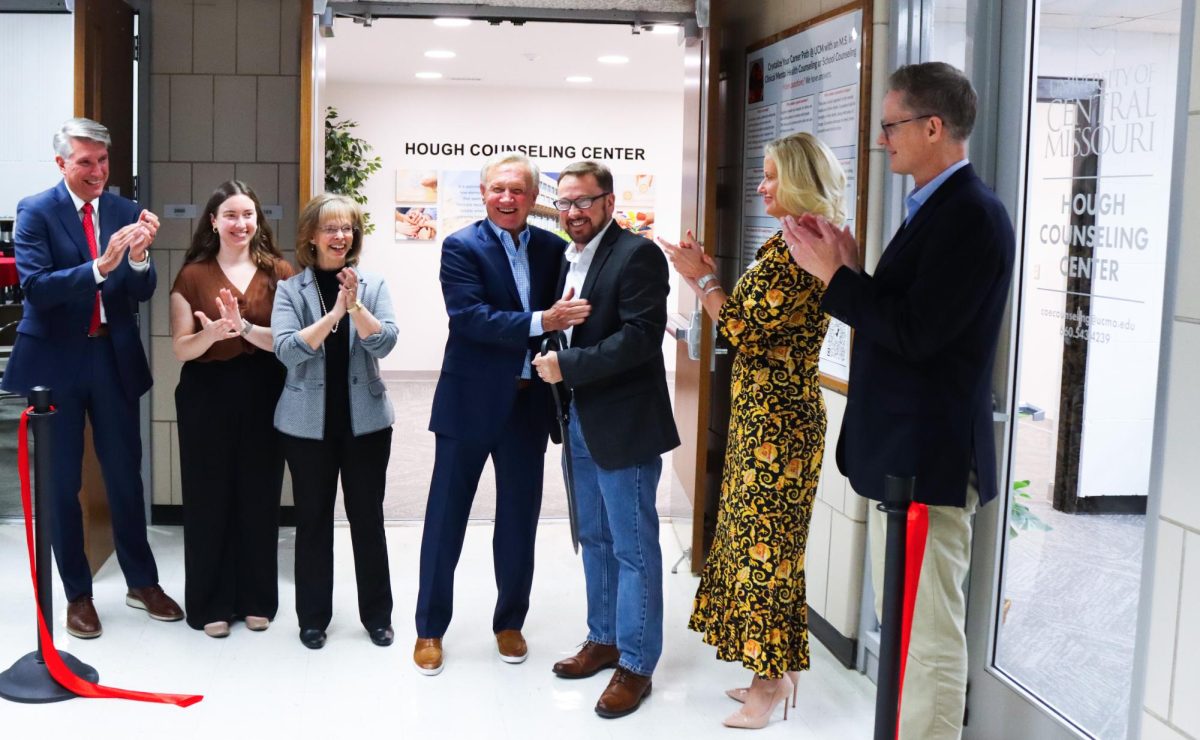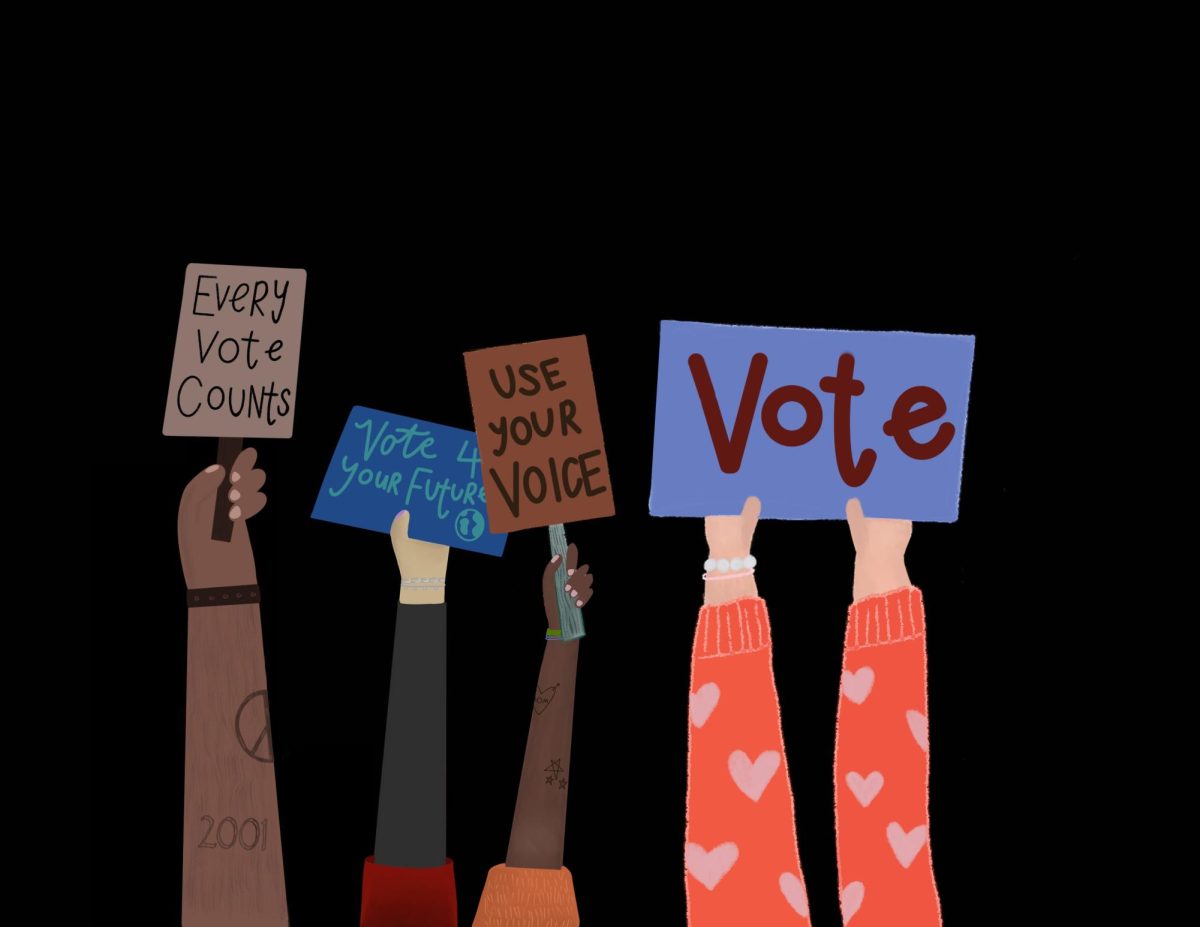Talking and breathing mannequins are now in the hands of UCM nursing students at one of the top nursing simulation centers and facilities in the Kansas City area.
When the Missouri Innovation Campus opened in August 2017, the nursing program received some of the highest quality technologies and most elaborate spaces.
“The rooms are set up, truly, like a hospital,” said Sara Hoffman, BSN program coordinator and assistant professor of nursing.
There are three main parts to the nursing section of the building — the simulation center, a skills lab and a classroom.
Hoffman said the simulation center has four mock hospital rooms and two control rooms. Instructors sit in a control room and observe the hospital room through a one-way mirror. Within the control rooms, professors have the ability to control mannequins as well as talk to and hear the students.
“One of them (mannequin) can deliver a baby and they all breathe,” said Jordan Claussen, third-semester nursing student. “I think you can draw blood off some of them and you can listen to their heart sounds.”
In the control room, professors can create realistic scenarios that students may or may not encounter in a clinical setting. For example, if a patient is having chest pains, the student would need to check the brain to see if they’re bleeding out and go from there.
“In the rooms, the mannequins are run by computers, so in the room in between we are using the computers to change their breath sounds or their blood pressure, to change any setting that we want,” Hoffman said. “We have headsets in there where we can push the mic button and we speak for the patients.”

Cheyene Miller, third semester nursing student, learning to administer medication through a gastric tube in the skills lab.
Hoffman said there’s also a microphone so professors can hear the students, as well as a TV in the control room. There is a camera in the simulation room that zooms in to better see the skills the students perform.
Students begin hands-on learning in the second week of the program, starting off with the initial steps of learning how to talk to a patient.
“The first semester, students will have one patient that they come and see five times,” Hoffman said. “His name is Jean Brodsky, and they really get to know him and talk to him because that’s the semester we just want them to get comfortable talking to people, touching and getting more information.”
In the second semester, they’ll get slightly more advanced tasks, such as redressing wounds on a surgical patient.
“Or they’ll have a patient who has diabetes and they need to check their blood sugar and then determine how much medication they’re going give that patient,” Hoffman said.
By the third semester, students are getting patients where their blood sugar is dropping and if there’s no intervention, they can go into a coma and no longer speak to the student.
“They don’t want to believe that that happens,” Hoffman said. “Or a patient who has chest pain and they’ve had an intervention and they’re bleeding out, but if they don’t check their brain to see if they’re bleeding out, they slowly then get worse until they could die.”
Hoffman said the simulations are about putting them through scenarios to be sure they make safe decisions as a nurse.
“Half of our group is watching (in the debrief room) and there’s cameras,” Claussen said. “So we watch each other do the simulation, which is pretty scary.”
When students are going through the simulation, time can seem to disappear.
“The time goes by so fast in there,” Claussen said. “All of a sudden you’ve been in there for 30 minutes.”
The scenarios they are given help to encourage the growth of their critical thinking skills. Hoffman said this allows them to make mistakes in a safe environment.
“We’d rather them make a mistake in the simulation center where then we can go to debriefing and talk about, ‘What would you do differently?’ than if they made that mistake in a hospital setting,” Hoffman said.
Claussen said most of the patients she has come across in clinicals are pleasant.
“They give us the mean, kind of crazy patients, which is not what you come across all the time,” Claussen said. “They want you to see the worst case. This is how mean or erratic they can be and what can happen as the patient declines in heath.”
After they’ve gone through simulation, they take time to debrief and talk about what worked and what didn’t.
“Students can be very stressed after simulation because they never know what to expect and they really have anxiety build up,” Hoffman said. “In debriefing, we really go in with the idea of it’s very student-led. We start with very open-ended questions and during that discussion, there’s just so many other avenues that are opened up for even further discussion.”

Nursing students Hailey Seeley and Courtney Hawley practicing CPR and using Automated External Defibrillator (AED).
When students are not doing simulations in the center, they are practicing the techniques they’re learning down the hall in the skills lab.
Hoffman said the skills lab is an open area with beds, some of them with mannequins, some of them empty, and that’s where the students actually practice skills.
“We reviewed chest compressions for CPR, we reviewed nutrition for people who can’t eat, intracranial pressure for people who come in with head trauma,” Claussen said. “It’s practicing, learning hands on what we can do in clinicals so when we come across a patient that has that injury we can treat them.”
The space alone cannot get students ready. It’s the professors and their training the prepare them.
Hoffman said all of the faculty are required to complete a nursing program. Several have continued on as a nurse in another job.
“I think that it’s very important so then we know what they’re going through. We’ve been there, done that,” Hoffman said. “It allows us to know how to best teach them because we all know how differently we learn, so it helps us present them with different teaching and learning methods.”
Claussen said she is confident in all of her faculty.
“Every single professor that I’ve come across has been amazing,” Claussen said. “They are all very knowledgeable.”
The space is able to create a lot of opportunities for students. Claussen said she has friends in nursing programs all over the state and they don’t have near the technology that the MIC campus has.
“I think, statewide, this is one of the best places for nursing because it’s just so new and we have access to everything,” Claussen said.
Hoffman said they have a perfect and realistic setup. The newest technology ensures they have hands-on experience with all the necessary tools.
“We really try to put out a very prepared student and we’ve been successful with that, especially with this new facility,” Hoffman said.


